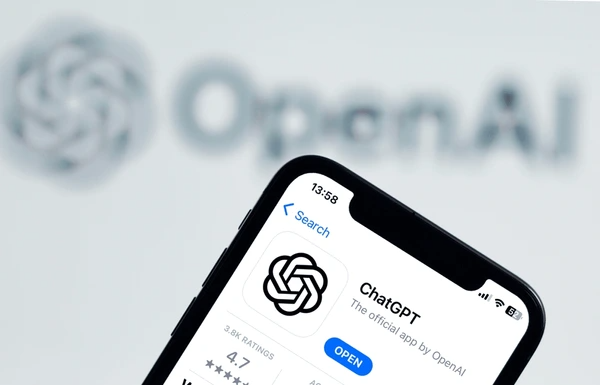
In 2025, the AI landscape is dominated by two major players: Perplexity vs ChatGPT. Both models have significantly impacted how we interact with technology, each excelling in different areas. While Perplexity focuses on computational efficiency and domain-specific tasks, ChatGPT stands out with its versatility and broad applications. In this article, we’ll explore their architectural differences, performance benchmarks, real-world applications, and unique strengths, offering a detailed comparison to help you decide which AI tool is best suited for your needs.

Architectural Differences
Perplexity: Efficiency and Specialization
Perplexity leverages a Mixture-of-Experts (MoE) architecture, activating only a subset of its 671 billion parameters per query, optimizing computational efficiency. This unique design enables Perplexity to handle complex tasks with minimal resource usage, making it ideal for technical and domain-specific applications. With a training cost of $5.5 million, Perplexity offers a more cost-efficient solution compared to ChatGPT, requiring just 2,048 Nvidia H800 GPUs over 55 days.
ChatGPT: Versatility and Scale
Built on OpenAI’s GPT-4 Turbo architecture, ChatGPT is a dense model with 1.8 trillion parameters. This architecture excels in versatility, enabling it to perform a wide range of tasks, from creative writing to coding. However, its higher computational costs—estimated at over $100 million—reflect its immense scale and complex infrastructure.
Performance Benchmarks
| Metric | Perplexity | ChatGPT |
|---|---|---|
| Mathematical Reasoning | 90% accuracy (surpassing GPT-4) | 83% accuracy on standard benchmarks |
| Coding | 97% success rate in logic puzzles | Top-tier debugging (89th percentile) |
| Context Window | 128K tokens | 200K tokens |
| Multimodal Capabilities | Text-only focus | Supports both text and image inputs |
Perplexity outperforms ChatGPT in technical tasks like mathematical reasoning and coding, whereas ChatGPT is stronger in creative writing and general knowledge applications.

Real-World Applications
Writing Assistance
- Perplexity: Ideal for structured, task-oriented writing. For instance, when tasked with summarizing the best Scottish football players, Perplexity delivered a comprehensive top-ten list, including legends like Henrik Larsson, and crafted a concise blog post.
- ChatGPT: Known for its conversational tone and creativity, ChatGPT generates well-rounded content, though it may lack the depth and structure of Perplexity’s approach.
Coding
- Perplexity: Recognized for solving complex coding problems with speed and accuracy. AI researcher Javier Aguirre praised Perplexity for resolving a challenging problem that ChatGPT couldn’t address.
- ChatGPT: Offers broader coding suggestions but may require further adjustments. Its main strength lies in providing detailed explanations, especially beneficial for beginners.
Brainstorming Ideas
- Perplexity: Delivers single, comprehensive ideas quickly. For example, when prompted with a children’s story about a boy on the moon, Perplexity generated a 387-word story within seconds.
- ChatGPT: Known for generating multiple creative ideas in a short amount of time, making it ideal for brainstorming sessions.
Learning and Research
- Perplexity: Provides concise, accurate summaries of complex topics, such as the causes of World War I. However, its responses tend to be less detailed than ChatGPT’s.
- ChatGPT: Better suited for educational purposes, offering in-depth explanations and context for more comprehensive learning.

Cost and Accessibility
| Tool | Free Tier | Paid Tier |
|---|---|---|
| Perplexity | Free, unlimited messaging | $0.14/million tokens |
| ChatGPT | Limited GPT-3.5 access | GPT-4 Turbo: $10–30/million tokens |
Perplexity’s open-source nature and lower API costs make it an attractive option for developers and businesses. Meanwhile, ChatGPT’s freemium model is more suited for casual users and larger enterprises, especially those requiring GPT-4 Turbo capabilities.
Ethical Considerations
- Perplexity: Prioritizes transparency and fairness with measures to address bias. However, its reliance on community-driven moderation can occasionally lead to inconsistencies in output.
- ChatGPT: Implements strict content moderation protocols but has faced criticism for occasional biases and producing overly generic responses in some scenarios.
Future Outlook
Perplexity is challenging the dominance of US-based AI models, presenting a shift toward cost-efficient, specialized solutions. Its open-source nature makes high-quality AI reasoning more accessible to a broader audience, democratizing AI development.
ChatGPT continues to dominate mainstream adoption, maintaining its relevance with versatility and a user-friendly interface. With integration into tools like DALL·E and Whisper, ChatGPT ensures its place in creative and enterprise applications.
Conclusion
In the Perplexity vs ChatGPT debate, the choice depends largely on your specific needs:
- Choose Perplexity if you prioritize cost-efficiency, technical precision, and domain-specific applications.
- Choose ChatGPT if you require a versatile, user-friendly tool for general-purpose applications, including creative writing and broad knowledge.
Both AI models are leaders in their respective niches, driving significant innovation in the AI industry. As Prof. Neil Lawrence observes, we are witnessing the dawn of a new era in AI development.
To get detailed scientific explanations of Perplexity vs. ChatGPT, try Patsnap Eureka.

